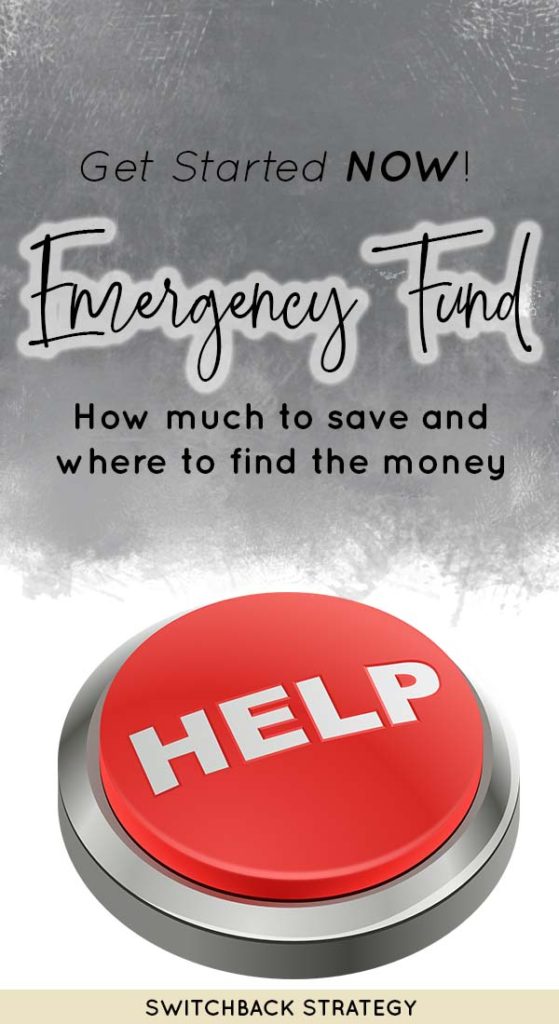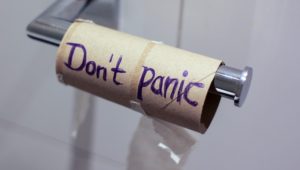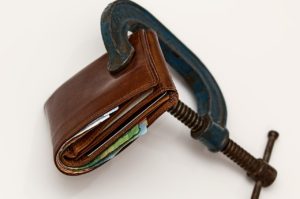An Emergency Fund is money set aside to cover large, unexpected expenses. Getting caught off guard can be stressful and costly. Don’t have a rich uncle? You need a financial cushion between you and Murphy’s Law. The less prepared you are, the more things seem to go wrong.
Having an Emergency Fund allows you to focus on solving the unexpected problem, without additionally worrying about how to finance it. By following these steps you will know how much you need, how to build your Emergency Fund, and where to keep it. If you don’t already have an Emergency Fund, start building one today!

Disclosure: This post may contain affiliate links, which means I may receive a small commission, at no cost to you, if you make a purchase through a link on this blog. I would never recommend a product I don’t use or love myself.
Why do I need an Emergency Fund?
Emergency funds give you a margin when something doesn’t go to plan. It allows you to avoid having to put expenses on a credit card, take out a high-interest loan, or increase insurance premiums, which can accrue fees, interest, and more debt.
An emergency fund should only be used in cases where something happens unexpectedly, and it is both necessary and urgent to address. Examples may include:
- Loss of a job
- Medical emergency
- Home repair
- Car trouble
- Family emergency
A 2020 Survey by Bankrate showed that over 60% of Americans couldn’t cover a $1000 expense and would have to borrow money. This is unfortunate, given that over 1 in 4 Americans had an unplanned expense in the last year.
The most extreme case is if a job is lost, this could be due to a company buyout, layoff, economic crash, or more recently the coronavirus. There are also other things that can create a financial emergency. A personal injury with medical expenses, a family member may become sick and you need to take a voluntary leave of abscess, a roof leak, or car engine malfunction. Whatever the situation, you want to be prepared ahead of time.
How much do I need to save?
Like so many things in life, it depends. But let me try to break it down for you.
1. Starting Out: $500-1000
If you are having a hard time getting started, start small. Everything you can set aside will help.
Another consideration is that if you have high-interest debt, this may be as much as you save for awhile. For example, if you have credit card debt with a 20% interest rate, then you would just get this initial emergency fund amount set aside, then work to pay down the worst debt quickly. This is because time is your enemy when you have really high interest payments. Once that debt is done, then you can focus on making your emergency fund more robust.
2. “Rule of thumb”: $2467
This is quickly becoming a magical number. Rather than having to do any complicated calculations or soul searching, economists Jorge Sabat and Emily Gallagher published the Rule of Thumb in Household Savings Decisions in 2019, to simplify the goal. So for most people, this is a great goal to set in sight.
There are some factors to consider though. This was made with an assumption that the amount $2467 was approximately equal to 1 month of income, so the more you make, the more you may want to save.
Also, the more unstable your finances are, the more you should have in your emergency fund. Some examples of things that increase your financial risk are:
- Having an unstable employment situation or industry with difficult job replacement, single income home
- High pre-existing debt
- Kids
- House with a mortgage
- Pre-existing health concerns.
Although one of these may or may not be significant enough to change your plans, the more unstable your financial situation is, the more you may want to start doing some math.
3. “The Golden Rule”: 3-6 months of expenses
Since there is a new “Rule of Thumb” in emergency funds, we will call this one “The Golden Rule” because it is what we had been going by for years. This requires some legwork. You need to make a list of all your expenses for a month and multiply it by at least 3 (up to 6).
Which number should you use? The risks you assessed above that prompted you to start calculating are the same one’s you’ll look at here. The more stable your financial situation, the less you need in your emergency fund (multiply by 3). The more unstable your financial situation, the more you need to set aside (multiply by 6).
There is no set rule here, but I will say that a good general rule is as much as it takes to feel secure. For couples, this means that if you disagree on an amount, go with whoever needs to put more in the Emergency Fund. This account is really about giving everyone involved some peace of mind.
My own financial situation has high risk, so creating an Emergency Fund was extremely important, and also challenging. I had high student loan debt, a house mortgage, and a single income with a job that is not salary, does not come with any benefits, and does not include severance pay, paid time off, or sick days. Because my fixed monthly expenses were high, I definitely needed a more robust margin. But everything is a tradeoff, and that was going to be a lot to keep in savings, so I actually modified mine. I put 4 months equivalent in a high interest savings account, 2 months equivalent in ETF’s (VTSAX), and 2 months equivalent in bonds that would trend somewhat opposite the stocks.
Where do I keep my Emergency Fund?
It should be easy and quick to access. The best place to keep it is in either a money market account or a high-interest savings account. They should be federally insured and have interest rates higher than the national average. The idea for these funds is not to profit off of it, but to protect you from having to incur debt unexpectedly.
You want your emergency fund in a separate account than the one you usually use. You want it to be liquid, but hard enough to get to that you don’t spend it frivolously. For a lot of people, building the emergency fund isn’t the hardest part, maintaining it is. If it feels like you are always trying to refill a hole you dug, the process can be frustrating.
Companies that I would recommend and have personal experience with are:
- Ally
- 1.5% APY (as of April 2020)
- No monthly maintenance or initiation fees
- No minimal deposit required
- Although you may be able to find higher interest rates, Ally is one of the easiest to use starting out as there are no minimums or fees
- Discover Online Savings Account
- 1.5% APY (as of April 2020)
- No montly maintenance or initiation fees
- No minimum deposit required
- Required balance for the higher interest rate is $500
- Discover is a large institution with great options and no minimum deposit ore fees required. There is a low minimum for the getting the highest interest rate.
- CIT
- 1.7% APY (as of April 2020)
- No monthly maintenance or initiation fees
- $100 minimum opening deposit
- Minimum balance of $25,000 or $100 monthly deposit.
- CIT has one of the most competitive interest rates; however, there are minimums required to obtain the best rates.
For more information of accounts, I recommend reviewing these High Yield Savings Accounts.
Where do I get the money?
You have an amount set in mind and a place to put it, now you need to know how to find the money. Try to get at least the first $500-1000 as quickly as possible, aim for 2-4 weeks. Here are some ideas to get you started:
Tax Refund – If you know that you will be getting a tax refund, this is a great way to get a big jump start all at once without it feeling too painful. Other things that may fall into this same type of category would be a work bonus, cash gifts, or more recently, stimulus checks. This may require delaying a purchase or trip that you had been thinking of, but it is one of the quickest way to put aside a large sum, and accomplish your goal.
Budget, Cut Expenses, and set Autodeductions – Create a monthly budget, see where you can cut expenses, set an amount that you can put into savings and then set it to autodeduct from your checking account to your separate savings account either each payperiod or each month. If you are set on pursuing financial success, this is something that you have to do. You can also reassess at the end of the month and if you have additional funds, set that aside too. This is the slow and steady approach, but getting this set up early and leaving it in place will help you achieve higher goals in the future as well.
Sell Things – Remove clutter from your space, share it with others, and build funds quickly. Everyone has things sitting around that you haven’t wanted to get rid of because it’s still in good condition, even though you haven’t touched it in years. Share it with someone who will really appreciate it, and achieve your goal too. Have a garage sale, bring it to local resale stores, or post it to facebook marketplace, craigslist, or ebay. Not only does this tackle your emergency fund, but decluttering can often free up some mental headspace and physical space as well.
Keep the Change – Pay for things in cash, when you get change, put it aside in a jar and then cash it in to a savings account as the jar fills.
Side Hustle – Increase your income by finding an additional source. This is especially important if you went through your budget, cut expenses, and there still isn’t anything left over. There are a lot of apps and online options that can help you do this: uber, taskrabbit, swagbucks, tutoring, blogging, or take a second job. Sometimes you can find the extra margin in your finances, but other times you have to create it.
What are the benefits of an Emergency Fund?
When it comes to living your best life, it helps to have the security of knowing that no matter what happens, you can weather the storm. Your Emergency Fund will be that financial security blanket. It can turn major emergencies into minor inconveniences. Imagine it’s Friday and you’re about to leave on a week long trip when you suddenly get called in and find out you are laid off. Did your chest just tighten? Now imagine that you just got laid off, but you have the next 4 months of expenses covered, no problem. Did you just exhale? I did. That’s the power of an emergency fund.
When I lost my job in 2019, having an emergency fund allowed me to take the time needed to travel and search out different opportunities. I ended up moving to a different state in that time, something I had been wanting for awhile. I wouldn’t have found it if I had needed to take the first job that came along to get the bills paid. It gave me more freedom to choose my future, and not just have to accept it.
Having an emergency fund is about more than just achieving your first financial goal, it’s about giving you opportunities to pursue your life goals. Most often, this means time. Time to find the job you’ve always wanted. Time to spend a little bit longer with your new born baby. Time with a sick loved one. Time to plan, instead of feeling like you have to react. So if you haven’t started building your emergency fund, start now, you won’t regret it.



